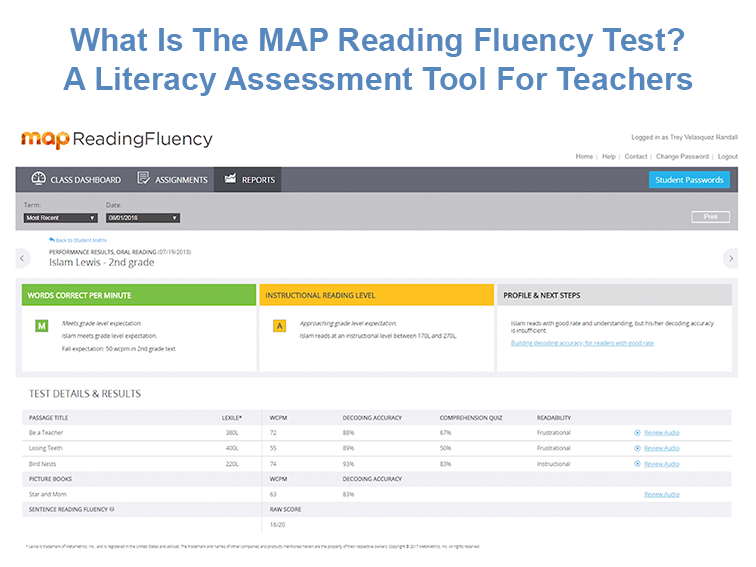
What Is The MAP Reading Fluency Test? A Literacy Assessment Tool For Teachers
by TeachThought Staff
This is sponsored content. NWEA.org asked us to let you know about the tool but we created all content free from editorial influence. We focused it objectively on clarifying the tool and its features in a way teachers interested in reading tools might find helpful. You can read more about our sponsored content policy.
Overview: The MAP Reading Fluency test is an adaptive reading test to assess the reading fluency of students in grades K-3. You can read more about the tool directly from NWEA here.
In Their Own Words:
According to NWEA, with MAP Reading Fluency you can assess your K–3 readers. MAP® Reading Fluency™ enables teachers to efficiently measure oral reading fluency with an online, adaptive assessment. In addition to fluency, the test measures foundational skills and reading comprehension—all with one 20-minute assessment. Group testing and automatic scoring return valuable time to teachers.
MAP Reading Fluency is computer adaptive, so it adjusts to accommodate pre-, early-, and fluent readers. Using a headset and microphone, students self-pace through activities including reading passages aloud and answering comprehension questions. Passages are recorded, saved, and automatically scored using advanced speech scoring technology. MAP Reading Fluency provides young students with an interactive, developmentally appropriate, and encouraging assessment experience. MAP Reading Fluency features an animated guide and a colorful interface.
Background: Reading Fluency In K-3
A prominent characteristic of most formal education settings–including most K-12 classrooms–is standardization.
For better or for worse, when a school is attempting to support 600 students in mastering dozens–or even hundreds–of academic standards, personalization of learning is an extraordinary challenge. While technology makes it at least an accessible idea, the actual practice of precise learning experiences for each individual student requires alignment between learning models, curriculum, instruction, and assessment. Getting each piece to cooperate is the key to personalized learning in the early 21st-century.
Literacy is at the heart of academic learning. When students struggle with reading and writing, the effects can be felt throughout their education. Helping to develop strong literacy skills as early as possible can pay extraordinary dividends in terms of academic success and student confidence. This makes assessing student reading fluency in grades K-3 among the most primary tasks for any elementary school teacher regardless of content area.
When literacy data is fresh, visual, and easy to collect, it has a better chance of being used to respond to planned instruction by busy classroom teachers doing their best to respond to the needs of 30+ students on a daily basis.
The MAP Reading Fluency tool is designed to work in this context.
Key Features Of NWEA MAP Reading Fluency Tool
1. Automatic Scoring
No manual scoring means that teachers save valuable time with immediate results designed to provide a clear path forward.
2. Data & Data Profiles
Data is designed to be actionable. Teachers receive words-correct-per-minute, decoding accuracy, and comprehension results, plus student performance compared to grade-level expectations. Further, the data provides personalized next steps. The reader profile offers specific instructional suggestions for each student.
3. Comprehensive Literacy
The adaptive design provides screening and foundational skills information in a single test. Also, Use results for RTI screening, grouping students, or differentiating instruction.
4. Voice Recording
The MAP Reading Fluency test is an adaptive reading test to assess the reading fluency of students in grades K-3. One of the features of the platform is the ability is to assess the reading fluency of an entire class of K-3 students in around 20 minutes. It also records student voices reading in the process.
The are many potential benefits for oral fluency with voice recording including:
1. Teachers to listen to later alongside students for guided feedback
2. Students to practice self-assessment
3. Teachers to use ‘competency-based’ learning artifacts at parent-teacher conferences as documentation of growth
4. Teachers and students to include voice artifacts in digital student portfolios
Read More About MAP Reading Fluency Or Request Demo
If you’re interested in learning more or even requesting a free demo of MAP Reading Fluency, here’s a link to get started.
